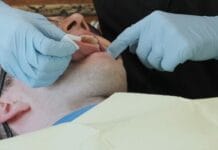Are you in need of CE credits? If so, check out our peer-reviewed, self-study CE courses here.
Test Your Knowledge of Cultural Sensitivity in the Dental Office
1. Cultural humility means genuinely attempting to understand a person’s identity, such as race and ethnicity, gender, sexual orientation, socioeconomic status, education, social needs, and others. Cultural humility is a better goal than cultural competency because a clinician will never be fully competent in the evolving dynamic nature of a patient’s experiences.
Cultural humility is a better goal than cultural competency for clinicians attempting to understand a person’s identity, such as race and ethnicity, gender, sexual orientation, and socioeconomic status. This is because a clinician will never be fully competent about the evolving dynamic of a patient’s experience.1,2
We all have biases; this makes self-awareness a central notion of cultural humility. Awareness can stem from self-reflective questions such as:1
- Which parts of my identity am I aware of? Which are most salient?
- Which parts of my identity are privileged and/or marginalized?
- How does my sense of identity shift based on context and settings?
- What are the parts onto which people project? And which parts are received well, by whom?
- What might be my own blindspots and biases?
It has been suggested to train health care providers in cultural humility instead of cultural competence, with the term cultural competence being abandoned altogether. “Training providers in becoming competent in various cultures presents the risk of stereotyping, stigmatizing, and othering patients and can foster implicit racist attitudes and behaviors.” Whereas “training providers in cultural humility, that is, an orientation to care that is based on self-reflexivity, appreciation of patients’ lay expertise, openness to sharing power with patients, and to continue learning from one’s patients” can better address these risks and decrease health disparities and improve quality of care.2
1. Khan, S. (2021, March 9). Cultural Humility vs. Cultural Competency – Why Providers Need Both. Boston Medical Center: HealthCity. https://healthcity.bmc.org/policy-and-industry/cultural-humility-vs-cultural-competence-providers-need-both
2. Lekas, H.M., Pahl, K., Fuller Lewis, C. (2020). Rethinking Cultural Competence: Shifting to Cultural Humility. Health Services Insights. 2020; 13. https://doi.org/10.1177/1178632920970580
2. The term ________ describes being “fair” by treating everyone the same and ignoring cultural differences.
Cultural blindness is a term used to describe individuals who ignore cultural differences and believe that everyone should be treated the same. Cultural blindness leads to only meeting the needs of the dominant group rather than meeting the individual needs, beliefs, and desires that other cultures may present.
Bowen, D.M., & Pieren, J.A. (2020). Cultural Competency in Healthcare. In D.R. Ocegueda (Ed.), Darby and Walsh Dental Hygiene: Theory and Practice (5th ed., pp. 54-65). Elsevier.
3. Ethnic minorities account for one-third of the current U.S. population.
Globalization has diversified the U.S. population, with one-third of the current U.S. population being made up of ethnic minorities. By the year 2050, it is estimated that 54% of the U.S. population will be ethnic minorities.
Bowen, D.M., & Pieren, J.A. (2020). Cultural Competency in Healthcare. In D.R. Ocegueda (Ed.), Darby and Walsh Dental Hygiene: Theory and Practice (5th ed., pp. 54-65). Elsevier.
4. All the following are included in the National Culturally and Linguistically Appropriate Service Standards except:
The National Culturally and Linguistically Appropriate Service (CLAS) Standards require multiple aspects to provide proper care and decrease disparities due to cultural differences. These standards include, but are not limited to:
- Communication and language assistance for individuals who have limited English proficiency at no cost to them.
- Provide easy-to-understand print and multimedia materials in languages commonly used by the populations in the service area.
- Provide effective, equitable, understandable, and respectful quality care and services that are responsive to diverse cultural health beliefs.
National Culturally and Linguistically Appropriate Services Standards. (n.d.). U.S. Department of Health & Human Services: Office of Minority Health. https://thinkculturalhealth.hhs.gov/clas/standards
5. Poverty is a major contributor and a huge barrier to individuals meeting basic human needs for systemic and oral health. Other barriers to health care often associated with poverty are lack of transportation, being unhoused, seasonal work, low literacy, and a lack of culturally sensitive health care personnel.
The National Culturally and Linguistically Appropriate Although poverty is not the only barrier to health disparities, it is a major contributing factor as well as a huge obstacle. Other barriers associated with poverty that prevent individuals from seeking the care they need and deserve include disenfranchisement, lack of transportation, being unhoused, seasonal work, prejudice, low literacy, inadequate level of education, and a lack of culturally sensitive health care personnel.
Bowen, D.M., & Pieren, J.A. (2020). Cultural Competency in Healthcare. In D.R. Ocegueda (Ed.), Darby and Walsh Dental Hygiene: Theory and Practice (5th ed., pp. 54-65). Elsevier.
6. The American Dental Association recommends implementing “motivational interviewing” to improve oral health literacy. This includes which of the following?
The American Dental Association recommends making oral health literacy part of all dental practices. The guidelines include communicating with patients by implementing motivational interviewing:
- Start with empathy
- Use the “teach-back” technique
- Give simple, clear instructions
- Ask the patient to explain or demonstrate back
- If they have difficulty, try again in a different way, using examples - Implement “motivational interviewing” in a judgment-free zone
- Ask the patient about barriers to changing behavior
- Ask what they think they can change and make a plan
- Document counseling and follow up at their next visit - Use visual aids - models and diagrams can be very helpful for children and adults
Making Health Literacy Part of Your Dental Practice. (2022, September 15). American Dental Association. https://www.ada.org/-/media/project/ada-organization/ada/ada-org/files/resources/community-initiatives/health-equity/action-guide-for-health-literacy.pdf
7. Individuals who do not speak English as their primary language and have limited ability to read, speak, write, or understand English are considered to have “limited English proficiency.” Dental offices are never required to provide interpreters for those with limited English proficiency.
Individuals who do not speak English as their primary language and have limited ability to speak, read, write, or understand English are considered to have “limited English proficiency” (LEP). These individuals may be entitled to language assistance.1
Dental practices included in the regulation under Section 1557 in the Affordable Care Act or certain instances covered under the Americans with Disabilities Act may require translation services.1 Using trained interpreters results in more accurate diagnoses, reduced risk of improper or delayed treatment, and better patient compliance.2 If your dental practice is not “required” to provide translation services, it is still best practice to do so. These services will benefit both the patient and the practice.
The American Dental Association suggests several tips for working with an interpreter:1
- Provide the interpreter with a brief explanation of what you are looking to achieve during the conversation with your non-English proficient patient.
- If you are with your patient, speak directly to them and make eye contact while you speak, even though you’re waiting for the interpreter to interpret.
- Use short but complete phrases. Remember, the interpreter needs to process two languages.
- Speak in the first person.
- Avoid slang, jargon, or metaphors.
- Allow the interpreter to clarify linguistic and cultural issues.
- Be patient! It may take some time, but the clear communication you are able to achieve will be worth it.
1. Using an Interpreter in Your Dental Office. (n.d.). American Dental Association. https://www.ada.org/en/resources/practice/practice-management/using-an-interpreter-in-your-dental-office
2. Limited English Proficiency (LEP). (2023, May 24). U.S. Department of Health and Human Services. https://www.hhs.gov/civil-rights/for-individuals/special-topics/limited-english-proficiency/index.html
Before you leave, check out the Today’s RDH self-study CE courses. All courses are peer-reviewed and non-sponsored to focus solely on high-quality education. Click here now.












